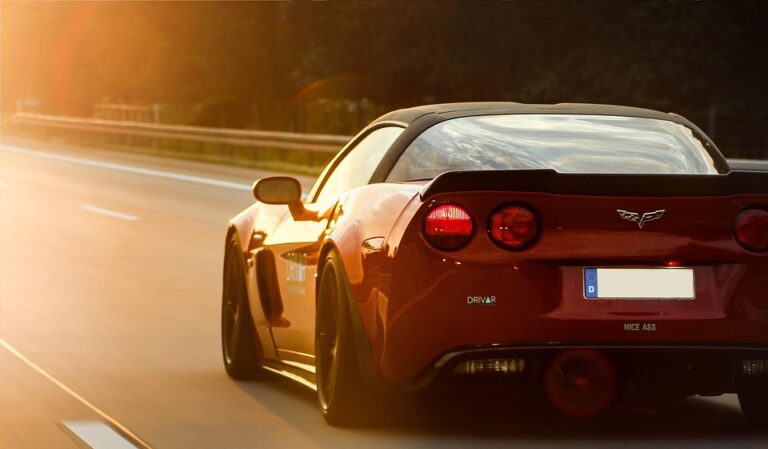Revving Up Luxury: The Evolution and Impact of Supercars
The automotive industry has seen a phenomenal evolution over the past few decades, especially in the realm of supercars. Known for their staggering performance, cutting-edge technology, and unmatched aesthetics, supercars represent the pinnacle of automotive luxury and engineering. This article will delve into the evolution of supercars, their impact on both enthusiasts and the automotive market, and what the future may hold.
The Rise of Supercars: A Brief History
In the 1960s and 1970s, brands like Ferrari, Lamborghini, and Porsche began to define what it meant to be a supercar. The Ferrari 250 GTO, introduced in 1962, was one of the first models to attract significant media attention due to its impressive speed and performance. By the 1980s, models like the Lamborghini Countach and the Porsche 959 broke conventions with their radical designs and engineering feats.
Key Statistics: A Growing Market
Today, the supercar market is booming. In 2021, the global supercar market was valued at approximately $12 billion, and it is projected to grow at a compound annual growth rate (CAGR) of 5.1% from 2022 to 2028. This growth is driven by increasing disposable incomes and a growing number of affluent consumers worldwide.
Features that Define Supercars
So, what exactly makes a vehicle a supercar?
-
Performance: Supercars are engineered for speed and agility. For instance, the Bugatti Chiron can accelerate from 0-60 mph in just 2.4 seconds and boasts a top speed of 304 mph.
-
Luxury and Design: These cars are not just about speed; they are architectural masterpieces, often featuring bespoke interiors made from the finest materials, advanced infotainment systems, and unique, eye-catching designs.
- Technology: Modern supercars incorporate cutting-edge technology such as hybrid powertrains, advanced aerodynamics, and state-of-the-art suspension systems to enhance performance and driving experience.
Example: The Impact of Hybrid Technology
The introduction of hybrid technology in supercars represents a significant shift in how performance vehicles are engineered. The McLaren P1, launched in 2013, merges a traditional gasoline engine with an electric motor, resulting in faster acceleration and improved fuel efficiency. This blend of power and sustainability illustrates a growing trend toward environmentally conscious luxury.
The Economic and Cultural Impact of Supercars
Supercars are not just symbols of wealth; they play a critical role in the global economy. They drive significant revenue for manufacturers, contribute to job creation in the automotive sector, and support ancillary industries such as luxury goods, tourism (in events like car rallies), and even motorsport.
Enthusiast Communities
Supercars foster communities that celebrate automotive culture. Events like the annual Monterey Car Week in California attract thousands of car enthusiasts, showcasing rare models that often become catalysts for economic activity in the region.
The Future of Supercars: Sustainability Meets Performance
As the automotive industry shifts towards sustainability, supercar manufacturers are at the forefront of this change. With increasing regulations surrounding emissions and a growing global concern for climate change, brands are exploring electric and hybrid technologies in their vehicles.
For example, the Rimac Nevera combines groundbreaking electric technology with supercar performance, achieving a staggering 1,914 horsepower and a 0-60 mph time of just 1.85 seconds. This indicates that the future of supercars might not just be about roaring engines but also about silence and efficiency, without compromising on speed.
Conclusion: The Enduring Allure of Supercars
The allure of supercars is undeniable. They represent the epitome of luxury, engineering prowess, and exclusivity. As the market continues to evolve, with an increasing focus on sustainability, it will be fascinating to see how supercars adapt to meet modern demands while retaining their mystical charm.
For those passionate about automotive history, culture, and trends, explore more articles on buzzo.live, such as [The Future of Electric Vehicles](insert link) and [Classic Cars: Timeless Beauty](insert link). You can also gain industry insights from external sources like the International Council on Clean Transportation or Automotive News.
Disclaimer: Buzzo.live does not provide professional consultancy, and the content herein is intended for informational purposes only. We do not accept liability for any outcomes resulting from the application of this information.
Multimedia Suggestions:
-
Image 1: A high-resolution image of a Bugatti Chiron.
- Alt Text: "Supercar Bugatti Chiron exemplifying luxury and performance."
- Image 2: A McLaren P1 showcasing hybrid technology.
- Alt Text: "Supercar McLaren P1, a blend of power and hybrid efficiency."


